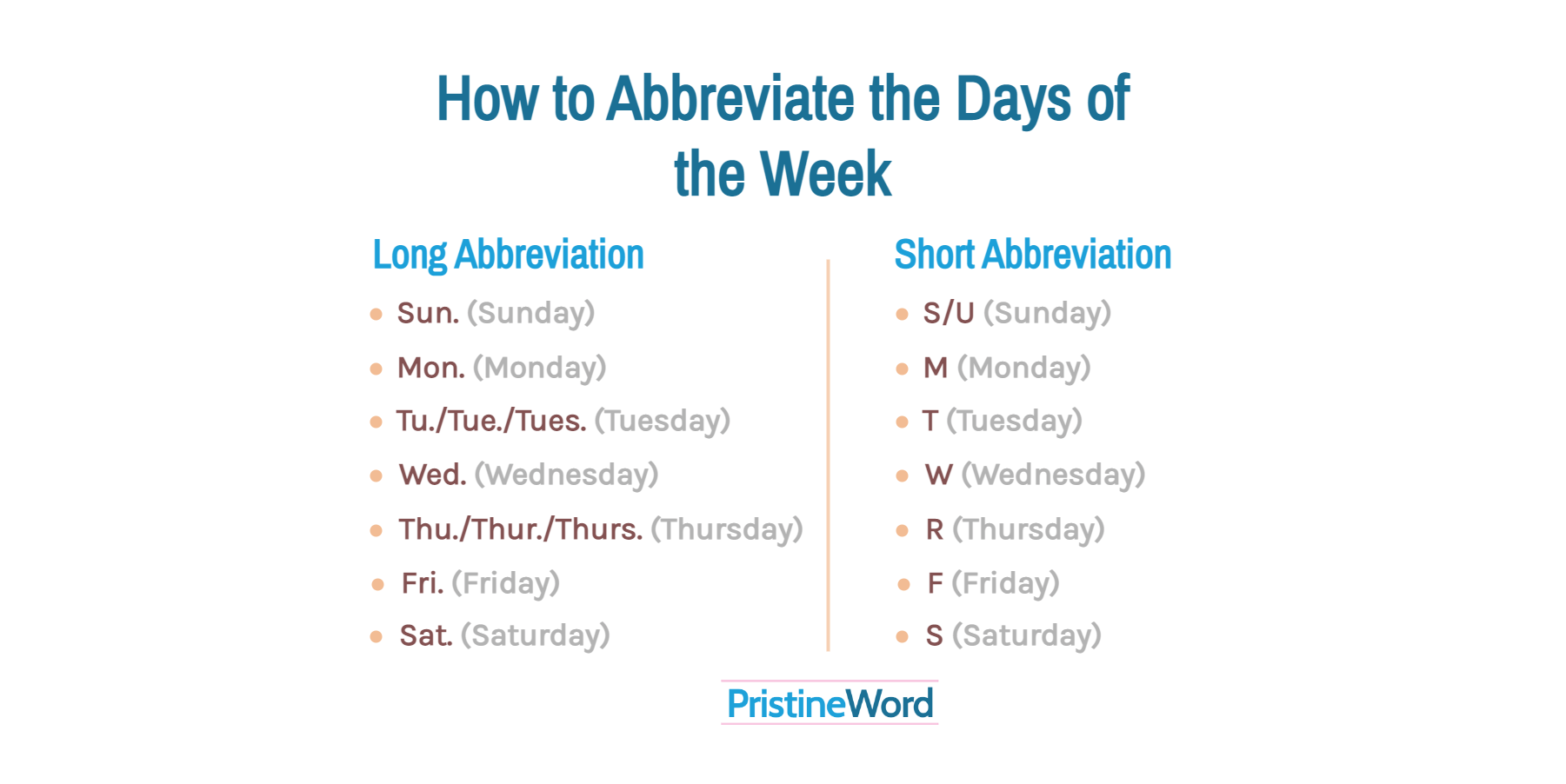There are two ways to abbreviate the days of the week: the long version and the short version.
There are two ways to abbreviate the days of the week:
- Long abbreviation:
-
Short abbreviation:
- Sunday: S or U
- Monday: M
- Tuesday: T
- Wednesday: W
- Thursday: R
- Friday: F
- Saturday: S
The long abbreviations are frequently used in English-speaking countries around the world, including the US, the UK, Australia, Canada, and South Africa. We recommend using the shortest form only if space is limited, for example, when writing quick notes or creating diagrams, charts, illustrations, or tables.
My husband and I are going to a concert this Sun.
Brainstorm session on M
And ensure it is obvious to readers which day you are referring to.
Open for business this T.
Open for business this Tues./Tuesday.
Do you need a period after these abbreviations? MLA style recommends using a period if the abbreviation ends in a lowercase letter. However, if the abbreviation is composed exclusively of capital letters, we can omit the period.
Amelia's birthday is on a Mon./M this year.
We'll add here that you can use the short version to write letter schedules. For example:
- MT: Monday and Tuesday
- MWF: Monday, Wednesday, and Friday
- MTWR: Monday, Tuesday, Wednesday, and Thursday
And remember, since the days of the week are considered proper nouns, we always capitalize them even if they are abbreviated.
I'll see you on Mon.
I'll see you on mon.

